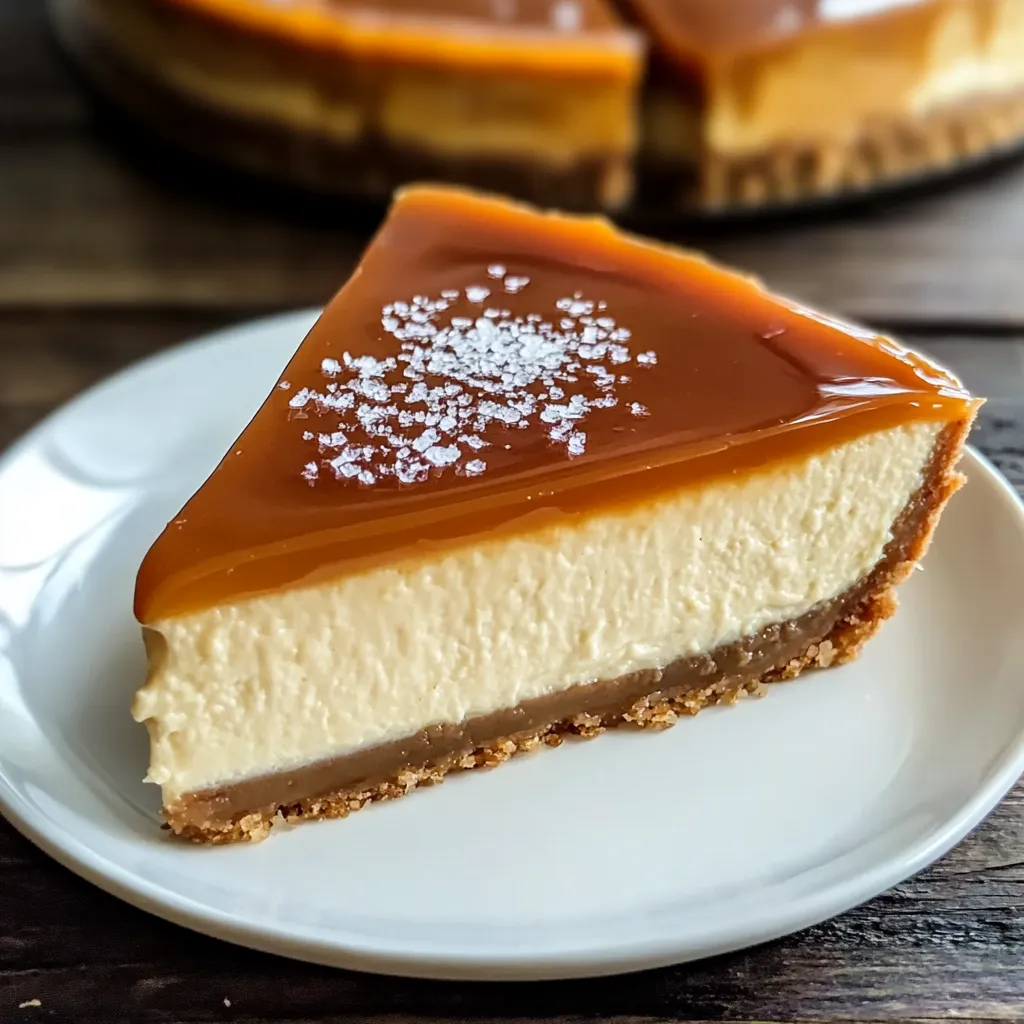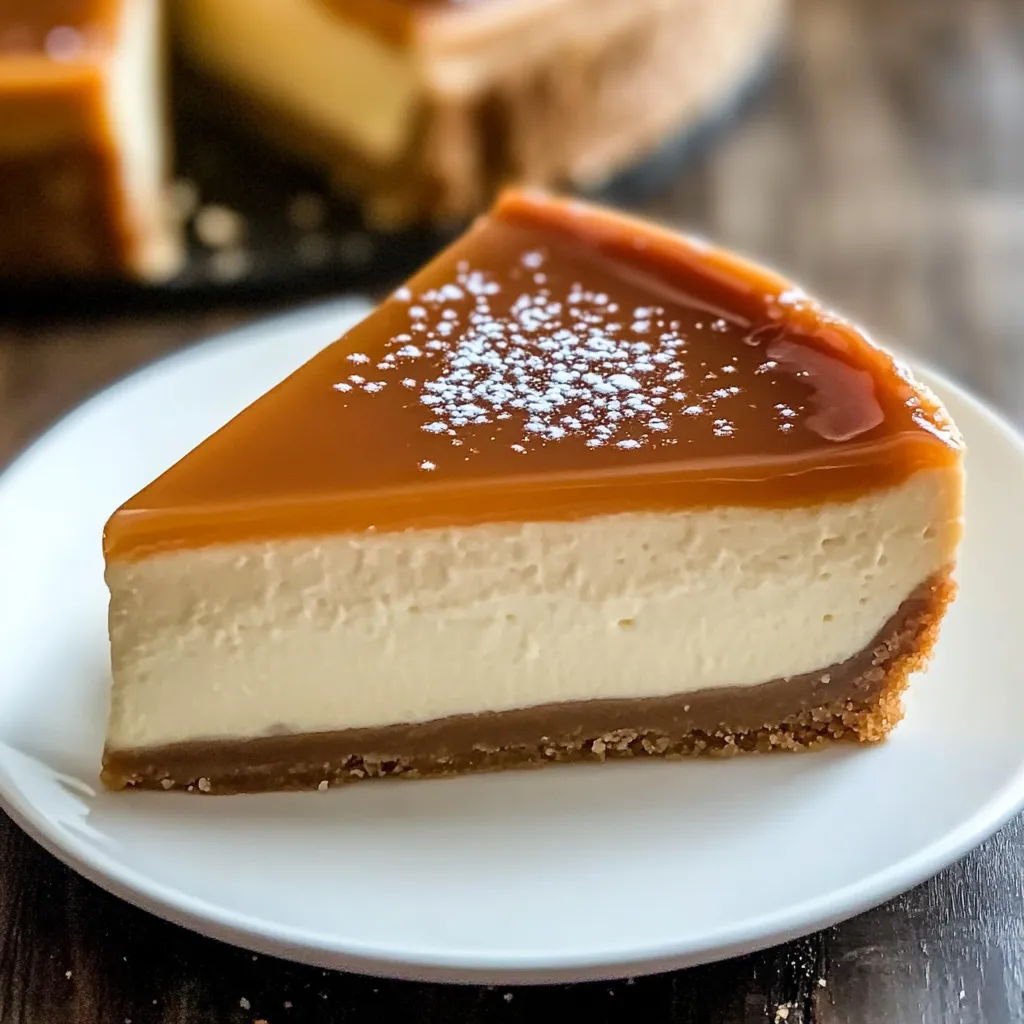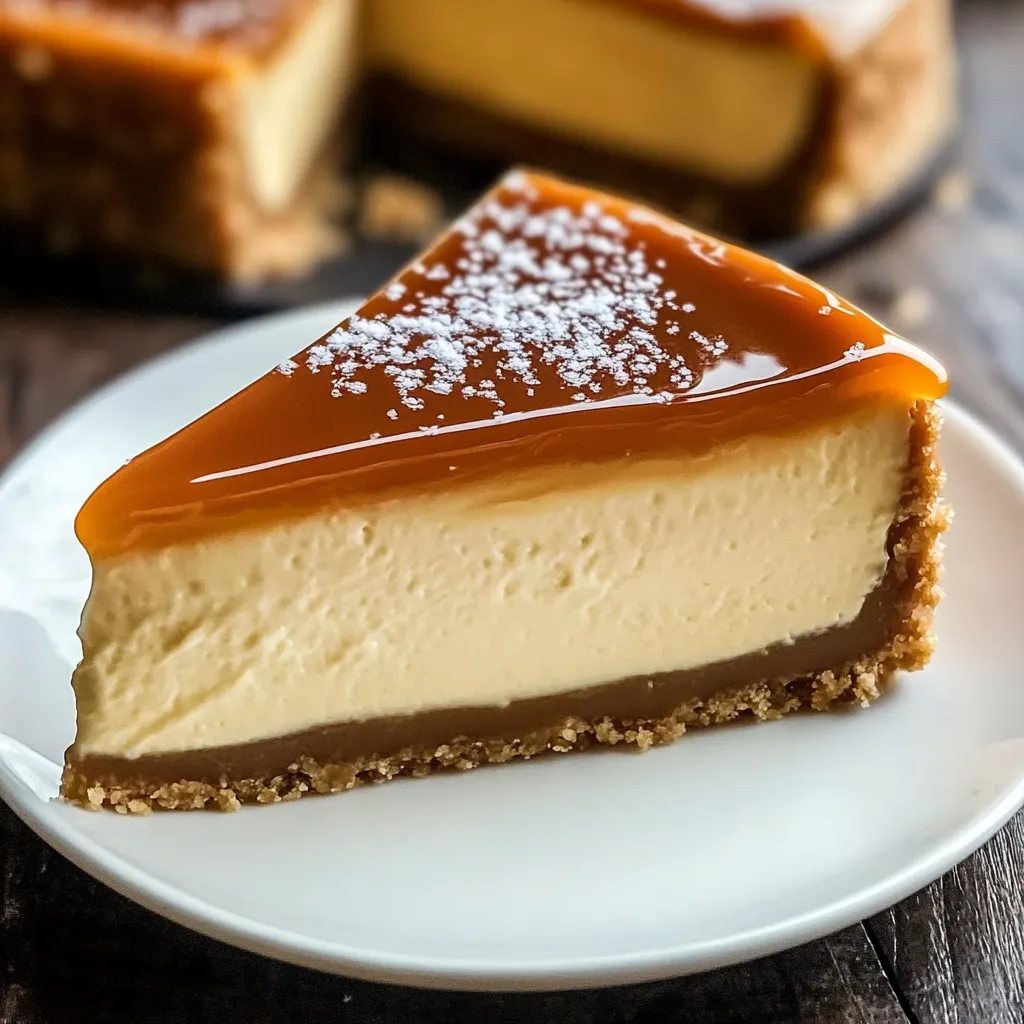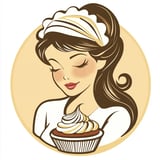 Pin it
Pin it
Biscoff salted caramel cheesecake creates an irresistible fusion of flavors that will transport your taste buds to dessert paradise. This indulgent creation marries the distinctive spiced warmth of speculoos cookies with velvety smooth cheesecake and the complex sweetness of salted caramel. The result is a dessert that balances sweet, salty, and spiced notes in perfect harmony while offering delightful textural contrasts throughout.
I first attempted this recipe when hosting a holiday dinner party last year. The moment I pulled it from the refrigerator, my kitchen filled with that unmistakable Biscoff aroma. What surprised me most was how the caramel developed an even richer flavor overnight. My brother-in-law, who typically declines dessert, requested a second slice and asked if I would make it for his birthday the following month!
Essential Elements
- 2 packages Biscoff cookies: These form our crust foundation and provide that signature caramelized spice flavor throughout the dessert. Their natural sweetness and subtle cinnamon notes create perfect harmony with the filling.
- 3 packages cream cheese (8 oz each): Always select full-fat, brick-style cream cheese at room temperature for the smoothest texture. The slight tanginess balances the sweetness of other ingredients perfectly.
- 1 cup granulated sugar: This provides necessary sweetness while allowing the distinctive Biscoff flavor to shine through. Avoid brown sugar as it competes with the cookie's flavor profile.
- 4 large eggs: These create structure while maintaining that luscious, silky texture we crave in cheesecake. Room temperature eggs incorporate more evenly into the batter.
- ¾ cup Biscoff cookie spread: This magical ingredient infuses the entire filling with caramelized cookie flavor. Choose smooth rather than crunchy spread for consistent texture.
- ½ cup heavy cream: Adds richness and creates that perfectly dense yet creamy cheesecake texture. Never substitute with lower-fat alternatives.
- 1 cup caramel sauce: Choose a high-quality, thick caramel sauce or make your own. The caramel should be thick enough to swirl without disappearing into the batter.
- Flaky sea salt: This elevates the entire dessert by enhancing the caramel notes and providing occasional bursts of saltiness that contrast beautifully with the sweet elements.
Assembly Instructions
- Cookie base preparation:
- Preheat your oven to 325°F and prepare a 9-inch springform pan by wrapping the exterior with heavy-duty aluminum foil to prevent water seepage during baking. Process Biscoff cookies in a food processor until they form fine crumbs, then mix thoroughly with melted butter until the mixture resembles wet sand. Press this mixture firmly into the bottom and slightly up the sides of your prepared pan, creating an even layer about ¼-inch thick.
- Initial baking process:
- Place the crust in the preheated oven and bake for approximately 10 minutes until slightly set and fragrant. The short baking time prevents the crust from becoming too crisp while still developing flavor complexity. Remove and allow to cool completely while preparing the filling.
- Cheesecake mixture:
- Beat softened cream cheese and sugar on medium-low speed until completely smooth and free of lumps, taking care not to incorporate excess air. This typically requires 3-4 minutes of beating, scraping down the sides of the bowl frequently. Add Biscoff spread and vanilla extract, beating until fully incorporated and uniform in color.
- Egg incorporation:
- Reduce mixer speed to low and add eggs one at a time, allowing each to fully incorporate before adding the next. This method prevents overbeating which can introduce too much air and cause cracking during baking. After the final egg, beat in heavy cream just until combined.
- Caramel integration:
- Pour half the cheesecake mixture over the cooled crust, then drizzle with ⅓ cup of the caramel sauce. Sprinkle lightly with flaky sea salt. Add remaining cheesecake batter, then create beautiful swirls by drizzling another ⅓ cup caramel sauce on top and gently marbling with a knife or skewer.
- Water bath baking:
- Place the foil-wrapped springform pan inside a larger roasting pan. Fill the outer pan with hot water until it reaches halfway up the sides of the springform pan. This water bath creates gentle, even heat that prevents cracks and ensures silky texture throughout the cheesecake. Bake for 65-70 minutes until the edges appear set but the center still has a slight jiggle.
- Cooling technique:
- When baking completes, turn off the oven, crack open the door, and allow the cheesecake to cool gradually inside for one hour. This prevents the dramatic temperature change that causes cracks. After an hour, remove from the water bath, discard foil, and cool completely on a wire rack before refrigerating overnight.
- Final presentation:
- Before serving, release the springform ring and transfer cheesecake to a serving platter. Warm remaining caramel sauce slightly and drizzle over the top. Sprinkle with additional Biscoff cookie crumbs and a light dusting of flaky sea salt. Slice with a warm, clean knife for perfect portions.
 Pin it
Pin it
I've experimented with numerous variations of this recipe and discovered that high-quality caramel sauce makes all the difference. During my daughter's birthday celebration last month, I used homemade caramel sauce with Tahitian vanilla beans infused throughout. The tiny black specks provided beautiful visual contrast and enhanced the flavor dramatically. My family couldn't stop raving about that special touch!
Serving Inspirations
Present this magnificent dessert on a simple white cake stand to highlight its beautiful caramel swirls and layered appearance. For elegant gatherings, cut pristine slices and serve on individual dessert plates with a light dusting of crushed Biscoff cookies and a small Biscoff cookie standing upright as garnish. The visual contrast between the golden-brown crust, creamy filling, and amber caramel creates an irresistible presentation.
This cheesecake pairs wonderfully with beverages that complement its flavor profile. Serve alongside a rich espresso to balance the sweetness, or offer a small glass of bourbon for adults to enhance the caramelized notes. For afternoon gatherings, a cup of chai tea makes a delightful companion, its spices harmonizing beautifully with the Biscoff flavor.
Creative Twists
Chocolate devotee adaptation: Add a layer of melted dark chocolate between the crust and filling for rich chocolate undertones. The slight bitterness of dark chocolate creates beautiful complexity against the sweet Biscoff and caramel components. Alternatively, fold mini chocolate chips into the batter for occasional bursts of chocolate throughout.
Seasonal fruit enhancement: During summer months, serve with fresh berries macerated in a touch of sugar and lemon zest. The bright acidity cuts through the richness beautifully. In fall, try a spoonful of cinnamon-spiced apple compote alongside each slice for seasonal harmony.
Textural dimension: Transform the traditional smooth topping by incorporating a crunchy Biscoff streusel over the caramel layer before baking. Simply combine crushed cookies with butter and brown sugar, then sprinkle over the top during the last 15 minutes of baking for delightful textural contrast.
Holiday variation: Around Christmas, add a touch of gingerbread spice to the filling and garnish with sugared cranberries for a festive appearance that complements the Biscoff flavor profile beautifully.
Freshness Preservation
Maintain optimal freshness by storing this cheesecake properly refrigerated in an airtight container or covered tightly with plastic wrap. When properly stored, it remains delicious for up to five days, though the crust may soften slightly over time as it absorbs moisture from the filling.
For longer storage, freeze individual slices by wrapping each portion in plastic wrap followed by aluminum foil. These frozen treasures maintain quality for up to three months. Thaw overnight in the refrigerator for best results, never at room temperature which can cause weeping and texture deterioration.
When serving chilled cheesecake, allow it to sit at room temperature for 20-30 minutes before eating. This slight warming releases aromatic compounds and softens the texture just enough to enhance the flavor experience considerably. The caramel becomes more pronounced and the Biscoff notes bloom beautifully.
This Biscoff salted caramel cheesecake represents the perfect balance of contrasting elements—sweet and salty, creamy and crunchy, familiar and sophisticated. While it requires some patience to prepare properly, each bite delivers such a wonderful combination of flavors and textures that everyone who tastes it will appreciate your effort. The way the caramelized notes of the cookies enhance the buttery caramel creates something truly magical that standard cheesecakes simply cannot match. Whenever I serve this dessert, the room falls silent except for appreciative murmurs—the highest compliment any dessert can receive!
 Pin it
Pin it
Frequently Asked Questions
- → What are Biscoff cookies and where can I find them?
- Biscoff cookies (also called Speculoos) are crispy, caramelized spiced cookies with a distinctive cinnamon-like flavor. They're commonly served with coffee and are available in most grocery stores in the cookie aisle, sometimes labeled as 'European biscuits' or 'coffee cookies.'
- → Why use a water bath when baking cheesecake?
- A water bath provides gentle, even heat during baking which helps prevent cracks, promotes even cooking, and creates a creamier texture. To use one properly, wrap your springform pan in aluminum foil (to prevent leaks), then place it in a larger pan filled with hot water that comes about halfway up the sides.
- → Can I make this cheesecake ahead of time?
- Yes! This cheesecake is perfect for making ahead. You can prepare it 1-2 days in advance and keep it refrigerated. For best results, add the caramel sauce and crushed cookies shortly before serving to maintain their texture.
- → What can I substitute for the Biscoff spread?
- If you can't find Biscoff spread (cookie butter), you can substitute with creamy peanut butter mixed with a bit of cinnamon and brown sugar, or simply omit it. The cheesecake will still have a Biscoff flavor from the cookie crust and topping.
- → How do I know when my cheesecake is done baking?
- A properly baked cheesecake should still have a slight jiggle in the center (about 2-3 inches in diameter) when gently shaken. The edges should be set and may be slightly puffed. It will continue to set as it cools. If the entire surface is firm or begins to crack, it's likely overbaked.
